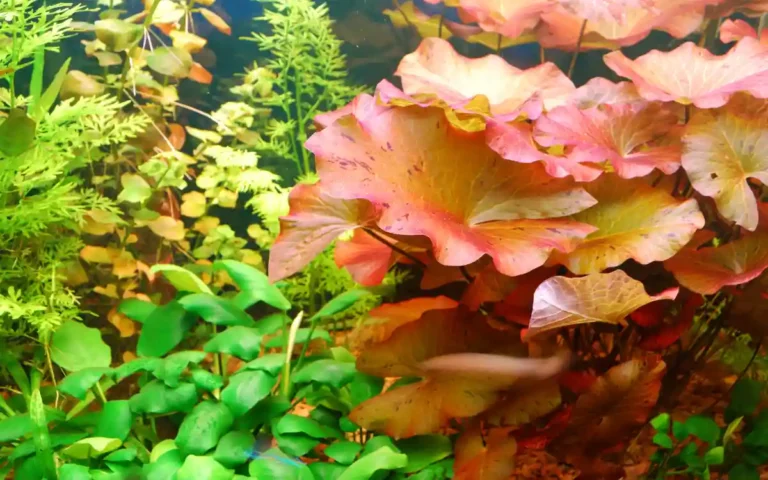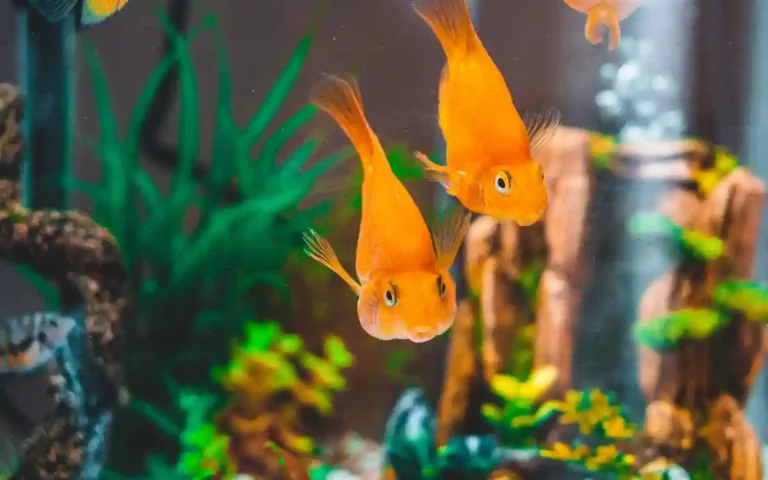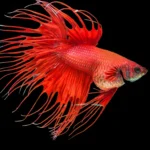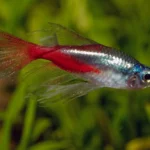Even the calmest-looking aquarium can hide a problem. One small change in water quality or a sudden stressor and your fish may fall ill quickly. But if you catch the signs early and understand what’s going on, you can treat the issue and prevent a full tank outbreak.
This guide breaks down the most common freshwater fish diseases, what causes them, how to treat them, and most importantly how to stop them from happening again.

What Makes Aquarium Fish Sick?
Fish don’t get sick randomly. Most illnesses trace back to environmental stress, and once their immune system is compromised, bacteria or parasites move in.
Water quality is the biggest culprit. High ammonia, nitrite, or nitrate levels stress fish and make them more prone to infections. A dirty or uncycled tank often leads to disease outbreaks, especially in new setups.
Stress is another hidden danger. Aggressive tank mates, a lack of hiding spots, or overcrowded tanks can lead to constant fear and immune suppression. Temperature and pH swings—especially sudden ones—can shock your fish, creating the perfect opening for illness.
Finally, even things like overfeeding or a poor diet can weaken a fish’s ability to fight off infection. Just like people, fish need good nutrition and a clean, safe environment to stay healthy.
How to Spot a Sick Fish

Fish show clear signs when they’re not feeling well, but you need to know what to look for. Physical symptoms might include white spots (like grains of salt), torn or faded fins, cotton-like growths, swollen bellies, or cloudy eyes.
Behavioral changes are just as important. If your fish is rubbing against objects, gasping at the surface, hiding more than usual, or swimming erratically—it’s likely something is wrong. Loss of appetite or lethargy are also red flags.
Catching these signs early can be the difference between a quick recovery and losing multiple fish.
Common Freshwater Fish Diseases (With Treatments)
Below are the top 10 diseases found in freshwater tanks, including causes and what to do next. Many of these have full-length guides linked for deeper help.
1. Fin Rot
When fins appear ragged, faded, or even rotting away, it’s often due to poor water conditions or stress. Clean water and antibacterial treatments like API Melafix usually clear it up.
2. Ich (White Spot Disease)
Small white dots on the body and fins, combined with flashing behavior, point to Ich—a protozoan parasite. Raising the tank’s temperature gradually and using Ich-X or Seachem ParaGuard can stop the spread fast.
3. Swim Bladder Disorder
Fish struggling to stay upright or floating upside down may have this disorder, usually caused by overfeeding or constipation. Try fasting for 24 hours, then offer a peeled, cooked pea. If it’s infection-related, Kanaplex can help.
4. Dropsy
A bloated body and scales sticking out like a pinecone are signs of a serious internal infection. Isolation and strong antibiotics are essential, but recovery is rare in later stages.
5. Popeye Disease
This condition causes one or both eyes to bulge outward. Often linked to injuries or dirty water, it should be treated by improving water quality and using broad-spectrum antibiotics.
6. Velvet Disease
Look for a dusty, gold-colored shimmer on your fish, especially if they’re breathing fast. Velvet is caused by a parasite and responds to copper-based medications and dim lighting.
7. Fungal Infections
Cottony patches on the fins, body, or mouth signal a fungal issue, often following an injury. Methylene Blue or antifungal treatments work well if caught early.
8. Anchor Worms
These red, thread-like parasites hang from your fish’s body and are often introduced via plants or new fish. Manual removal followed by treatment with medications like Dimilin usually clears the infestation.
9. Columnaris (Mouth Rot)
If you see cottony lips, body ulcers, or rapidly deteriorating fins, Columnaris could be the cause. It thrives in warm, poorly maintained tanks and needs antibacterial meds like Furan-2 or Maracyn.
10. Ammonia Poisoning
Red, inflamed gills and gasping at the surface often mean ammonia levels are too high. Immediate water changes and a detoxifier like Seachem Prime are crucial.
Treating Sick Fish: A Step-by-Step Plan
Start by isolating the affected fish in a quarantine or hospital tank. This prevents disease from spreading and allows more precise treatment.
Once isolated, test your main tank water for ammonia, nitrites, and nitrates. Perform a partial water change if anything’s off.
Next, choose the right medication for the issue—don’t mix treatments unless specifically directed, and remove any activated carbon from the filter before dosing.
Some go-to treatments include:
- API Melafix for fin rot or minor injuries
- Seachem ParaGuard for Ich and parasites
- Methylene Blue for fungal infections
- Kanaplex for internal bacterial problems
- Aquarium salt for mild stress or gill issues (avoid with scaleless fish)
How to Prevent Fish Illness Long-Term
Prevention is simpler than dealing with disease after it hits. Start by quarantining all new fish for at least two weeks—even if they look healthy.
Maintain your tank with weekly water changes (20–30%), regular gravel vacuuming, and testing for ammonia, nitrite, nitrate, and pH. A good filtration system and heater go a long way in keeping things stable.
Avoid overfeeding and stock your tank based on its size and filtration capacity. Too many fish in a small tank is one of the most common mistakes.
Also, mix up their diet variety helps boost immune function and keeps your fish more active.
When to Consider Euthanasia
Sometimes, a fish won’t recover. If it’s clearly suffering, not eating, or showing no signs of improvement after several treatments, euthanasia may be the most humane option.
Clove oil is widely accepted among aquarists as a gentle and effective method.
Frequently Asked Questions
Can fish get better without medication?
They can if the illness is environmental, like poor water quality. But bacterial and parasitic infections typically require treatment.
How long should I quarantine new fish?
Two to four weeks is ideal. Watch for signs like spots, erratic swimming, or lethargy before introducing them to your main tank.
Is salt safe for all species?
No. Avoid using salt with sensitive, scaleless fish like Corydoras or Kuhli loaches.
What’s the most contagious fish disease?
Ich spreads quickly in community tanks, especially when fish are stressed.
Can stress alone cause sickness?
Yes. Chronic stress can weaken the immune system, opening the door to infections.
Final Thoughts
You don’t have to be an expert to keep your fish healthy—but you do need to stay observant. A clean tank, a stable environment, and early action are your best tools for preventing and managing disease.








